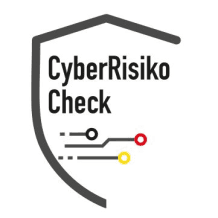Introduction – The Importance of External Partnerships in the Digital World
In today’s economic landscape, companies increasingly rely on outsourcing components of their IT infrastructure to external service providers and partners. With rapid technological advancement and global connectivity, Third-Party IT Risk Management becomes a central element of corporate strategy. Companies utilize specialized providers to reduce costs, drive innovation, and achieve competitive advantages. However, this also brings potential risks stemming from dependence on these external parties. These risks extend far beyond technical disruptions and touch on issues such as cybersecurity, data privacy, regulatory compliance, and the company's reputation.
What exactly does Third-Party IT Risk Management mean?
Third-Party IT Risk Management refers to the systematic process of identifying, assessing, and managing risks arising from collaboration with external IT providers. Under this approach, each external service is analyzed for its potential threats to internal IT security and business operations. Technical factors as well as legal, operational, and strategic aspects are taken into account. The process includes regular audits, risk assessments, and continuous monitoring. The goal is to identify vulnerabilities early and ensure that agreed-upon security standards and compliance policies are adhered to.
Why is Third-Party IT Risk Management so important?
The increasing interconnectedness in global supply chains and the outsourcing of IT services bring a number of challenges. Today, companies are no longer solely responsible for their IT security, but must transfer a large portion of that responsibility to their external partners. The following reasons underscore why a robust Third-Party IT Risk Management is indispensable:
Protection against Cyber Threats: External service providers are potentially vulnerable to cyber-attacks. A successful hacker attack on a supplier can serve as a springboard for attacks on the entire network of the company.
Compliance with Legal Requirements: Many industries are subject to strict regulatory requirements that also dictate IT security and data processing standards. Breaches can lead to significant fines and a loss of reputation.
Maintaining Business Continuity: Failures at a third-party provider can disrupt the operation of critical systems and paralyze business activities. Well-thought-out risk management can help minimize downtime.
Building Trust: Investors, customers, and partners expect companies to actively manage their risks. A transparent and effective risk management approach enhances trust in the organization.
The key questions surrounding Third-Party IT Risk Management
What are the central components of a Third-Party IT Risk Management program?
A comprehensive program includes several key aspects: First, the identification of all relevant external service providers who have access to critical IT systems. This is followed by the risk assessment, which considers both technological and strategic factors. Continuous monitoring and regular reassessment of risks are also important to react promptly to changing threat landscapes. Additionally, a response plan must be in place that defines clear measures for risk mitigation in case of damage.
How do you identify risks associated with third-parties?
Risk identification occurs in several steps: First, all third-party providers are cataloged and sorted according to their risk potential. Criteria such as data access rights, system integrations, and past security incidents are analyzed. Subsequently, standardized evaluation methods are employed to identify potential vulnerabilities. A crucial part of this process is also the alignment with IT and compliance departments to harmonize internal policies with external processes.
What methods and tools support risk management?
There are a variety of tools and frameworks that assist in evaluating and managing third-party risks. These include, among others, automated risk monitoring systems, security audit software, and specialized compliance management solutions. The choice of the right tools depends on the size of the company, the complexity of the IT infrastructure, and the specific industry requirements. Many companies rely on a combination of internal and external tools to ensure comprehensive monitoring.
How can risks be effectively minimized?
Risk reduction occurs through preventive and reactive measures. Preventively, companies can, for example, establish strict contractual agreements with their providers that stipulate security standards and regular audits. Reactively, it is important to establish clear emergency plans and communication strategies. In the event of a security incident, immediate countermeasures must be initiated to limit damage. Furthermore, continuous training for employees in dealing with external partners is essential to reduce the risk of human error.
What challenges does Third-Party IT Risk Management face?
The challenges of this management approach are manifold. On one hand, the complexity of modern IT infrastructures must be considered, where external providers are integrated into interconnected, often global networks. On the other hand, security standards and compliance requirements vary significantly by region and industry. Another issue is the dynamic and constantly changing threat landscape, which requires ongoing adjustments to the management process. Additionally, many companies struggle to obtain accurate and current information about the security practices of their third-party providers. All these factors necessitate constant updates and adjustments to risk management strategies.
Case studies and practical tips for everyday life
The practical implementation of Third-Party IT Risk Management can be found in numerous industries. An example from the financial sector: Banks and insurance companies often collaborate with external IT service providers that process critical data. Here it is particularly important that all security certifications and standards are thoroughly maintained, as a failure or security breach can lead to enormous financial damage. Similar requirements apply in the healthcare sector, where sensitive patient data is processed.
Another important case is cooperation with cloud service providers. Although such services offer enormous advantages in scalability and cost optimization, they also carry specific risks, particularly concerning data security and access to sensitive information. Companies must establish clear contractual agreements that cover not only the technical infrastructure but also the physical security of data centers.
Practical tips for implementation:
• Conduct regular risk workshops and training for all employees working with third-parties.
• Implement a standardized evaluation procedure for selecting new external partners.
• Utilize both internal and external audits to continuously review security standards.
• Develop emergency plans and simulate crisis scenarios to be prepared for potential security incidents.
• Maintain a central documentation of all third parties and their risk assessments to keep a comprehensive overview at all times.
Future Perspectives and Technological Developments
With the advent of new technologies such as Artificial Intelligence (AI) and machine learning, Third-Party IT Risk Management is increasingly being digitized. Intelligent systems can detect patterns and anomalies in real-time that indicate security gaps or potential attacks. These technologies are revolutionizing how risks are identified and assessed. Future developments promise even more automated and precise monitoring of external partners. It will be essential to combine traditional management methods with innovative approaches to maintain an overview and respond flexibly to threats in an increasingly digitalized world.
What role does communication with third-parties play?
Communication between companies and their external partners is a central success factor in Third-Party IT Risk Management. Open and transparent exchange fosters trust and helps both sides to detect security gaps early and jointly develop solutions. Regular meetings, joint workshops, and detailed reporting are important pillars that must not be neglected. Only in this way can it be ensured that all stakeholders are always informed about the current status and necessary measures can be implemented immediately.
How should contracts and Service Level Agreements (SLAs) be designed?
Contracts with third-party providers should include clear provisions regarding security standards, data protection, and response times in the event
Third-Party IT Risk Management in Germany: Current Developments
The importance of third-party IT risk management in Germany is continuously growing. According to recent studies from the Federal Office for Information Security (BSI), German companies are increasingly affected by cyber threats. The Bitkom association reports that 84% of German companies have been victims of cyber attacks in the last two years.
Particularly in the field of third-party IT risk management, the following trends are evident:
Increasing investments in preventive security measures
Heightened awareness of comprehensive security concepts
Integration of third-party IT risk management into existing compliance frameworks
EU Compliance and Third-Party IT Risk Management
With the introduction of the NIS2 directive and stricter GDPR requirements, German companies must adjust their security strategies. Third-Party IT Risk Management plays a central role in fulfilling regulatory requirements.
Important compliance aspects:
Documentation of security measures
Regular review and updating
Proof of effectiveness to regulatory authorities
Practical Implementation in Corporate Daily Life
The integration of third-party IT risk management into daily corporate life requires a structured approach. Experience shows that companies benefit from a step-by-step implementation that addresses both technical and organizational aspects.
Think of third-party IT risk management as an insurance policy for your company: The better you are prepared, the lower the risk of damage from security incidents.
Further Security Measures
For a comprehensive security strategy, you should combine third-party IT risk management with other security measures:
Vulnerability Management - Systematic vulnerability management
Penetration Testing - Comprehensive security testing
Security Hardening - Employee awareness training
Incident Response Plan - Preparation for security incidents
Conclusion and Next Steps
Third-Party IT Risk Management is an essential component of modern cybersecurity. Investing in professional third-party IT risk management measures pays off in the long run through increased security and compliance.
Do you want to optimize your security strategy? Our experts are happy to assist you with the implementation of third-party IT risk management and other security measures. Contact us for a free initial consultation.
🔒 Act now: Have our experts evaluate your current security situation
📞 Request advice: Schedule a free initial consultation on third-party IT risk management
📋 Compliance check: Review your current compliance situation
📌 Related topics: Cybersecurity, IT security, Compliance Management, Risk Assessment




